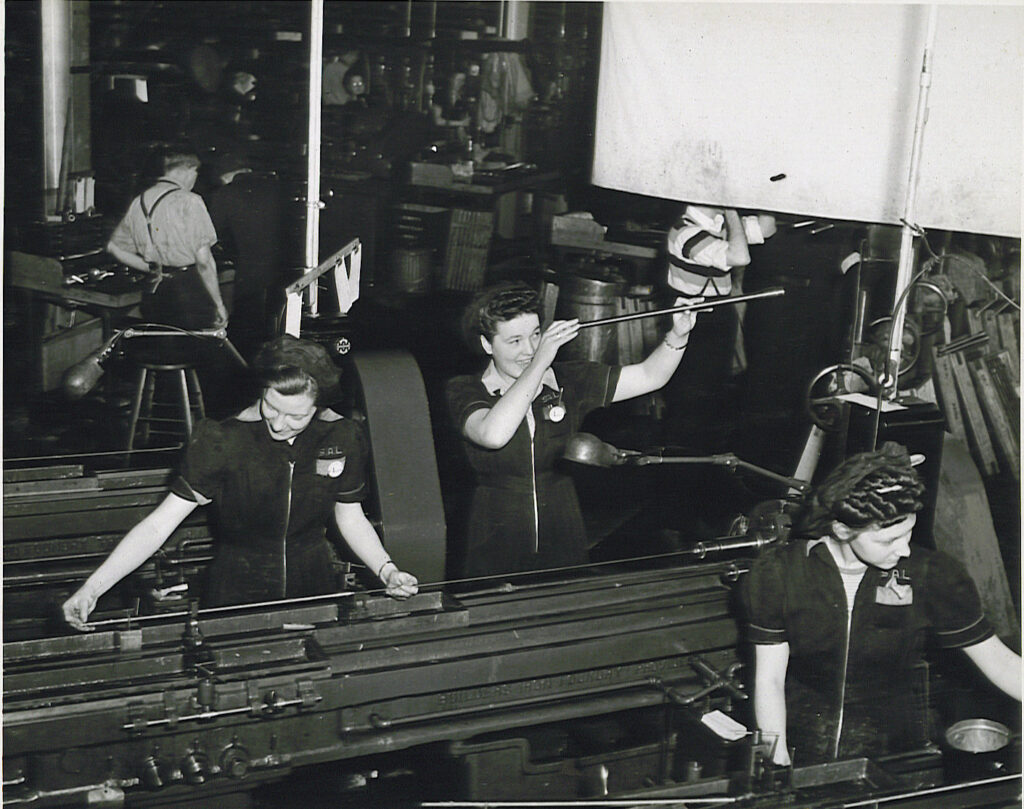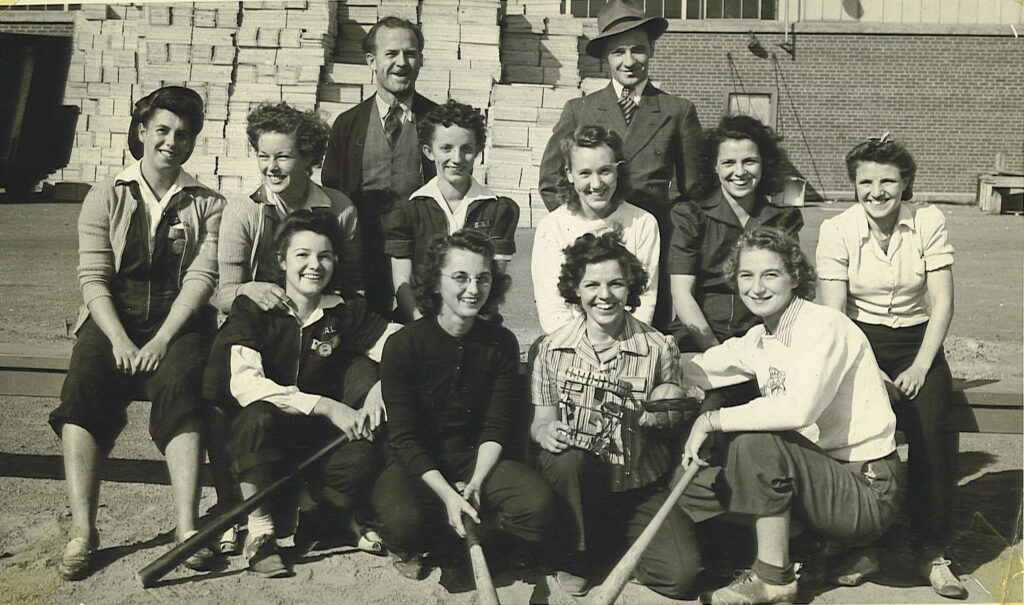When Second World War Allied soldiers marched into battle, it’s likely many were armed by the women of Lakeview.
Between 1941 and 1945, the Dominion Small Arms Limited munitions factory at the foot of Dixie Road and Lakeshore manufactured over a million machine guns, rifles and pistols, including the Lee-Enfield No. 4 rifle and the Mark II Sten submachine gun.
It also fired up industrial development in the Lakeview area that, post-war, drove the housing, business and population boom that helped to build modern Mississauga and the neighbouring municipalities of Long Branch and Etobicoke.
In 1940, Canada was moving quickly to establish wartime manufacturing and training sites and Toronto Township (the future Mississauga) was key to the federal government’s plans.
The small Malton Airport, which had opened in August 1939, days before the start of the Second World War, had been converted into a base for the Royal Canadian Air Force, providing training for aircrews from Canada and Great Britain.
Down in Clarkson, plans were underway for a new British American Oil Refinery to be built with the sole purpose of providing fuel and lubricants for airplanes, and in Long Branch, officials envisioned a massive manufacturing complex to assemble small arms – weapons designed for individual use, such as handguns and shoulder arms.
The area already had a history of wartime activity courtesy of the nearby Long Branch Aerodrome and Curtiss Aviation School, which had trained pilots and manufactured aircraft for the First World War.

A worker looks down the barrel of a rifle, one of the many assembled at the Dominion Small Arms complex in Lakeview in the early 1940s. (Photo courtesy Heritage Mississauga)
Initially, the Department of National Defence’s Ordinance Branch was tasked with leading the build-up of a Canadian weapons arsenal. However after two months of slow-moving bureaucratic decision-making, the federal government created Dominion Small Arms Limited, a Crown corporation in August 1940 to speed construction.
Construction began on land adjacent to the Long Branch Rifle Ranges, which ran south of the Lakeshore from Cawthra Road to Etobicoke Creek, the natural and municipal border between Toronto Township and the village of Long Branch.
Things began to move quickly. By November 1940, Dominion Small Arms had 735 employees, working in a single-story 81,000-square foot factory and its first five rifles had been assembled and tested.
Soon after the factory expanded to include multiple buildings totaling 212,000 square feet, including a two-storey red brick rifle inspection facility with floor-to-ceiling windows to provide ample natural light for the hundreds of inspectors.
At the height of production, Dominion employed 5,300 workers, two-thirds of them women from across the country. They earned 50 cents/hour and three-quarters of them were under the age of 40.
To attract this massive workforce, Dominion ran a nationwide employment recruitment drive, targeting single women and married women without children whose husbands were in the military, offering free travel to Toronto and affordable housing onsite.
“Girls Wanted, Aged 18 to 35,” ran one recruitment newspaper ad. “We arrange for your Room and Board. Finest Working Conditions in a Modern Plan. Good Food at Low Prices. Special Girls Club in Separate Building with a Variety of Athletic and Lounging Rooms.”
Over the course of the war, over 14,000 people would come and go as workers here, including a few of my aunts who moved from New Brunswick and Manitoba.
Like other wartime manufacturing efforts, housing was required to attract workers to Lakeview, then a small rural village.
Federal Crown corporation Wartime Housing Limited constructed 200 pre-fabricated homes and a dormitory that housed 422 women, which included a bowling alley, a games room, dating parlours and a cafeteria.
It published a biweekly company newspaper, ‘The Fore Sight’, and organized dances, biweekly blood donation drives and war bond fundraisers, some of which featured film stars, such as Lucille Ball. Small Arms president and general manager Colonel Malcolm Jolley made sure there were lots of activities and supports for staff, many of them young women far from home.
Female counsellors were hired to offer advice and support, an athletic director organized football, swimming and horseback riding. An employees’ athletic association ran leagues for bowling and softball, a woodworking club, and a men’s and women’s rifle club, which during off-hours used the onsite rifle range for competitions.

Employees from one of Dominion’s employee-run baseball leagues, which planned lots of activities onsite for the women from across Canada who came to work at Dominion Small Arms Limited in Lakeview. (Photo courtesy Heritage Mississauga)
All told, Dominion Small Arms had revenues of $43.9 million during the war years on an initial public investment of $8 million. In December 1945, wartime production halted and in spring 1946 Dominion Small Arms assets were transferred to Canadian Arsenals Limited, a new Crown corporation.
Post-war, Canadian Arsenals Limited leased the majority of the buildings and lands to private industry, retaining about 20 per cent for its post-war small arms manufacturing.
Companies such as Snap-on Tools, Fisher & Ludlow (Canada) Ltd., Phoenix Engineering Products Limited, and Antonine Vanities Limited moved in, setting up manufacturing facilities.
Canadian Arsenals Limited’s Lakeview factory closed in 1974.
In 2017 the City of Mississauga purchased and converted the Small Arms Inspection Building (Building #12) into a creative hub for artists and groups, with programming delivered by local non-profit Creative Hub 1352.
You can hear more stories about the people and events that helped shape Mississauga via our podcast, We Built This City: Tales of Mississauga, available on your favourite podcast platform or from our website.
